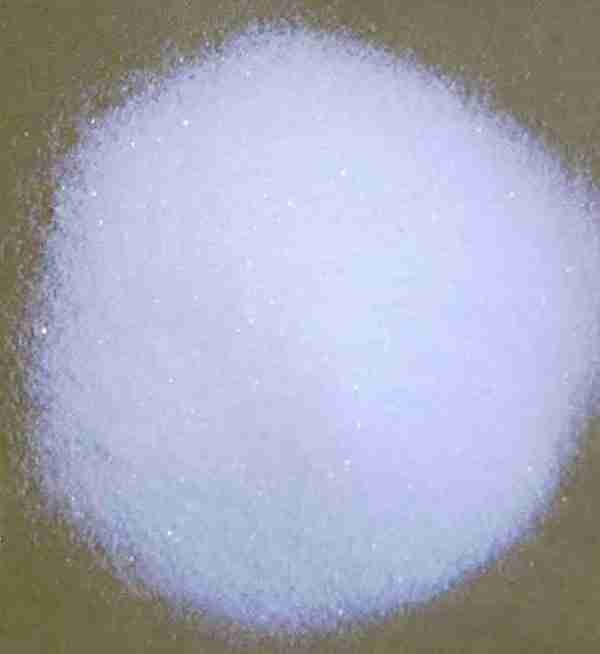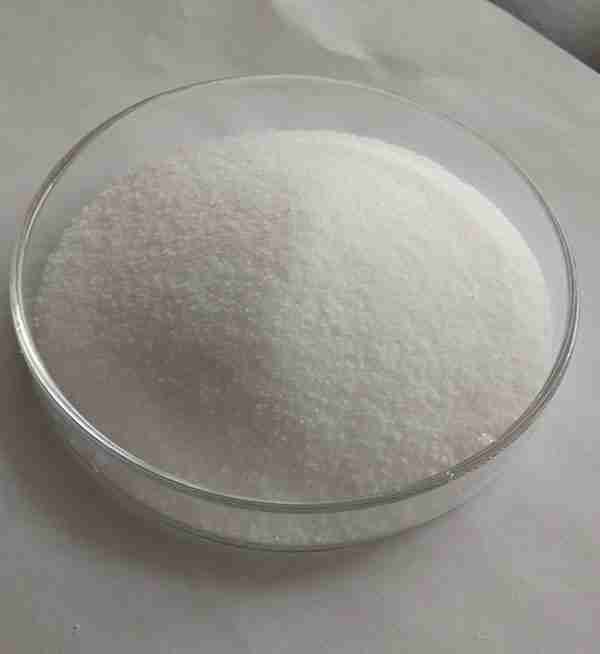fructose-1,6-diphosphate cas 488-69-7 (1)
Chemical Name: Fructose-1,6-diphosphate
CAS No.:488-69-7
Molecular Fomula:C6H14O12P2
Molecular weight: 340.115682
Appearance: White crystalline or crystalline powder
Assay??98%min
发送询盘
Description
Fructose-1,6-diphosphateQuick Details
Chemical Name: Fructose-1,6-diphosphate
CAS No.:488-69-7
Molecular Fomula:C6H14O12P2
Chemical Structure:
Molecular weight: 340.115682
Appearance: White crystalline or crystalline powder
Assay??98%min
Fructose-1,6-diphosphate Typical Properties
Item
Specifications
Results
Appearance
White crystalline or crystalline powder
White crystalline
Identify
TLC
Must be similar in TLC spots and colour
Conforms
Precipitation
positive reaction
positive reaction
Sodium salt
positive reaction
positive reaction
IR
Must be similar with parallel table
Conforms
Inspect
Granularity
30
Conforms
Acidity
PH: 5.5??6.5
6.01
Appearance of solution
colourless
Conforms
Moisture
24.0??27.0??
26.59%
Heavy metal??Pb????mg/kg
??1.5
Conforms
Arsenic??As????mg/kg
??1.0
Conforms
Bacterial count??cfu/g
??1000
Conforms
Colibacillus??MPN/100g
??40
Conforms
Yeast , mold??cfu/g
??25
Conforms
Assay, Anhydrous??%
??98.0??
98.92??
Fructose-1,6-diphosphate Usage
Suitable for a variety of symptoms caused by cardiac ischemia for coronary heart disease, angina, acute myocardial infarction, heart failure and arrhythmia adjuvant therapy. In recent years, also used for myocardial injury caused by hyperkalemia, acute adult respiratory distress syndrome, dilated cardiomyopathy, parenteral nutrition, cardiopulmonary bypass heart surgery as adjuvant therapy, has a good effect. Can accelerate alcohol metabolism, for the adjuvant treatment of acute poisoning. Fructose can be used to supplement the heat diabetes, because fructose does not require insulin into glycogen in the liver or metabolic decomposition. In addition they can accelerate the metabolism of ethanol, can be used for the treatment of acute alcohol poisoning. Although it is part of the body can be converted into glucose, but not for hypoglycemia.
Fructose-1,6-diphosphate Packaging and Shipping
25kg per drum
Fructose-1,6-diphosphate Storage
Keep in a well-closed,light-resistant, dry and cool place.
| 5 |
|
0 |
| 4 |
|
0 |
| 3 |
|
0 |
| 2 |
|
0 |
| 1 |
|
0 |
- 2
- 2-diallylpent-4-en-1-amine
- 4
- 95-16-9
- Ammonium sulfamate
- Benzothiazole
- cas:67889-00-3ح2
- cas:83524-75-8 | pigment black 32
- cas:928836-00-4 | 2
- cas:932745-70-5 | 4
- Chemical Minerals
- Coconut diethanolamide
- Daily Chemicals
- discount
- for sale
- General pvc resin
- hexyl D-glucoside
- in stock
- Lauramidopropyl betaine
- LAURIC ACID MONOETHANOLAMIDE
- Petroleum Additives
- Plasticiser
- Ploymers
- price
- PVC
- quotation
- Raw Materal
- Remove term: Petroleum Additives Petroleum Additive
- SODIUM ETHYL 2-SULFOLAURATE
Related Products
Hydroxyproline is a non-essential amino acid divided from another amino acid called proline. It is created by the communication of proline with ascorbic acid vitamin C. This process produces a hydroxyl team bound to a hydrogen-oxygen particle, which is affixed to a carbon particle of proline as well as converted to hydroxyproline.Trans-4-hydroxy-l-proline is an optically energetic form of 4-hydroxyproline with l-trans setup. It can be used as human metabolite, plant metabolite and also computer mouse metabolite. It is an tautomer of trans-4-hydroxy-l-proline zwitterions.
EC 3.4.21.14, previously classified, now redirects to EC 3.4.21.67, identifying endopeptidase So. This serine endopeptidase is integral in the hydrolysis of peptide bonds, a critical function in biological systems. Its applications extend across research and development in the pharmaceutical and biotechnological industries.
Chemical Name: beta-NADH disodium salt
Other name: beta-Nicotinamide adenine dinucleotide disodium salt
CAS No.: 606-68-8
Molecular Fomula: C21H30N7NaO14P2
Molecular weight:?689.44
Appearance:?white to light yellow powder
Assay: 95%min
Hydrolyzed keratin is originated from wool and is a light yellow to brownish-yellow clear fluid with a particular smell. It needs to undertake unique organic treatment to come to be brief peptides prior to it can be naturally used. Treated keratin is an acknowledged prospective resource of high-quality healthy protein with high nutritional value and secure quality.
It is a keratin hydrolysate derived from acid, enzyme and other hydrolysis methods, and has been used in feed and food industry, pharmacy, fertilizer, pesticide, environmental protection, leather industry, cosmetics and many other fields. Specifically, the material can be blended with polyamide 6 to prepare nanofibers for adsorbing chromium (VI). In addition, the compound can be used as an effective ingredient in the manufacture of shampoo, shower gel and shower gel. In addition, the chemical can be used as an effective ingredient in the production of deodorization compositions. In addition, the substance has been proven to be useful as a hair styling agent.
Chemical Name: Choline salicylate
CAS No.: 2016-36-6
Molecular Formula: C12H19NO4
Molecular Weight: 241.28
Appearance: Red-Brown Crystal
Polyglutamic acid (CAS 25513-46-6) is usually in the form of white powder.
Polyglutamic acid is a high molecular compound with good water solubility and biocompatibility.
It has many excellent properties, such as water retention, plant growth promotion, and improved fertilizer utilization. In the agricultural field, it can be used as a fertilizer enhancer, water retainer, etc., which helps to improve the fertility and water retention capacity of the soil and promote the growth and development of crops. For example, adding it to fertilizer can reduce fertilizer loss and improve the effect of fertilizer.
In the field of cosmetics, polyglutamic acid is also used, because its moisturizing properties can be used in skin care products.
Chemical Name: UV-120
Other Name: (2’,4’-Di-tert-butylphenyl 3,5-di-tert-butyl-4-hydroxybenzoate)
CAS No.: 4221-80-1
Molecular Fomula: C29H42O3
Molecular weight: 438.66
Assay: ≥99%(LC)
Chemical Name: Imazalil Sulfate
CAS No.: 58594-72-2
Molecular Formula: C14H14Cl2N2O.H2SO4
Molecular Weight: 395.26
Appearance: Solid
Polyglutamic acid (y-PGA), also known as natto gum, is a high molecular peptide polymer synthesized from several glutamic acid monomers through microbial fermentation. It is rich in glutamic acid, glucose, protein and minerals. , vitamins and other biologically active substances.
Polyglutamic acid (??-PGA) is a sticky substance that was first discovered in ??Natto??. It is currently widely used in agricultural production and is called a new biostimulant. It is fully water-soluble, biodegradable, edible, and non-toxic. It is a biopolymer produced by microbial fermentation.
Chemical Name:?UDP-glucuronic acid
CAS No.: 2616-64-0
Molecular Fomula: C15H22N2O18P2
Molecular weight: 580.28
Appearance: Solid
Assay: 98%
EC 3.4.21.14, previously classified, now redirects to EC 3.4.21.67, identifying endopeptidase So. This serine endopeptidase is integral in the hydrolysis of peptide bonds, a critical function in biological systems. Its applications extend across research and development in the pharmaceutical and biotechnological industries.
Chemical Name: Potassium Castorate
CAS No.: 8013-05-6
Molecular Formula: C57H107K3O12
Molecular Weight: 1101.74718
Appearance: Yellow Liquid


















Reviews
There are no reviews yet.